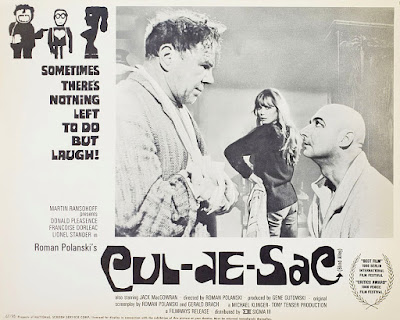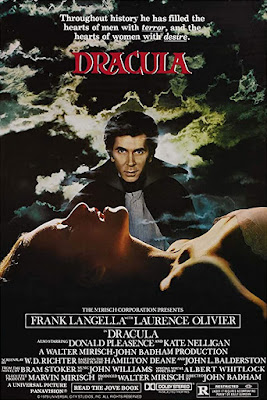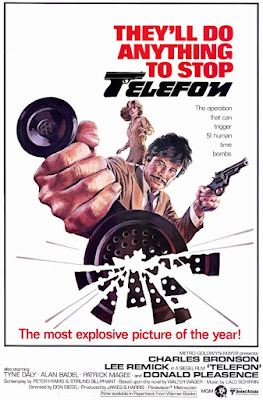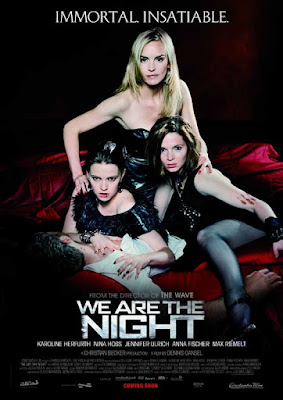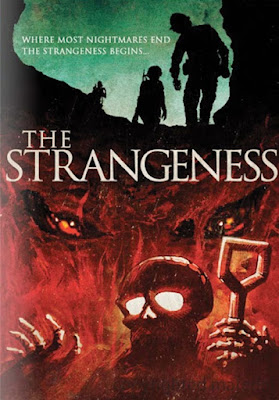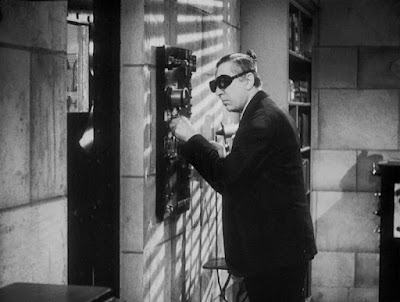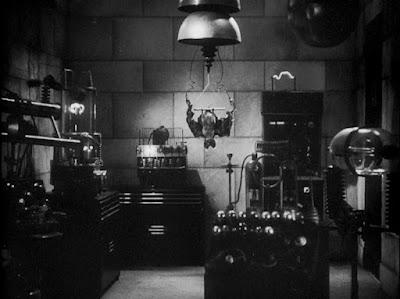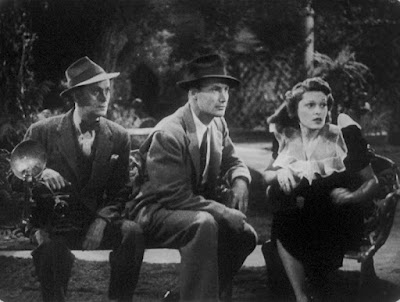(1960) Directed by Sidney Hayers; Written by George Baxt; Starring:
Anton Diffring, Erika Remberg, Yvonne Monlaur, Donald Pleasence, Jane Hylton,
Kenneth Griffith and Yvonne Romain; Available on Blu-ray and DVD.
Rating: ***½
This post is part of the Devilishly Delightful DonaldPleasence Blogathon,
hosted by Gill Jacob from Realweegiemidget Reviews and Yours Truly. Be sure to check out all the terrific posts, covering a wide
range of films/TV appearances from his expansive career.
Martin (Kenneth Griffith): “Thieves, murderers?”
Dr. Rossiter/Schüler (Anton Diffring): “Yes. Well, don’t you
see? These are the people who will constitute our circus troupe. I change their
faces, minimize the police apprehension. Willing subjects for my anxious hands.
We hold their safety and they hold their tongue. It’s the ideal front.”
What is it about the circus that makes it such a fertile
ground for tales of horror and suspense? Look no further than Tod Browning’s forays
into the big top and sideshows (The Show, The Unknown, Freaks),
which exploit the more lurid aspects of that colorful milieu. If nothing else,
the movies have taught us that the circus is a haven for shady individuals with
questionable histories and motives, on the run from the law. Director Sidney
Hayers and writer George Baxt’s depiction of a circus from hell is considered
the second title in a rough trilogy of films from Anglo-Amalgamated,* starting
with Horrors of the Black Museum (1959) and ending with Peeping Tom
(1960). Filmed in England, Circus of
Horrors incorporated footage of a real, working performance troupe, Billy
Smart’s Circus.**
* Fun Fact #1: Circus of Horrors could easily be
confused for a Hammer Films production, considering the fact that Anton Diffring,
Yvonne Monlaur, and Yvonne Romain all appeared in movies from Anglo-Amalgamated’s
competitor.
** Fun Fact #2: Note the circus banners emblazoned with “BS”
(No, not that kind of BS) for Billy Smart, which conveniently stand in
for Bernard Schüler’s circus.

The story begins in 1947, with Dr. Rossiter fleeing the UK after
a botched attempt at plastic surgery. Along with his accomplices, surgeon Angela
and her brother Martin (Jane Hylton and Kenneth Griffith), he makes his way to
the French countryside, where he adopts the name Bernard Schüler. He encounters
Vanet, a down-on-his-luck circus owner circus, played by Donald Pleasence (in a
small but pivotal role). Vanet’s daughter Nicole’s (Carla Challoner) face is
scarred from a wartime schoolyard bombing (“There are many like me now.”),
which Schüler promises to restore, for a price. After Vanet’s “accidental”
death, Schüler takes on the role of Nicole’s uncle, while vowing to turn the
threadbare circus into something noteworthy (“It’ll be the ideal front.”). In a
move that would make any self-respecting human resources professional cringe,
he combs the seedy underbelly of various European towns, searching for women
with shady backgrounds and facial flaws. Once they’re a part of the circus, he
fixes their appearance, and keeps detailed dossiers on them, so they won’t blab
to the authorities. Any attempts to defy Schüler by leaving result in their immediate
peril. Flash-forward a decade, and Schüler’s circus is a big success despite a
series of questionable incidents (It comes to be known as the “Jinx Circus.” A Berlin
police inspector (Peter Swanwick)* is wise to Schüler’s subterfuge, but without
proof of any foul play, he’s forced to let him go. Of course, that doesn’t stop
him from tipping off the British authorities, including Scotland Yard inspector
Arthur Ames (Conrad Phillips), posing as a reporter.
* Fun Fact #3: If the “German” police inspector looks
familiar, it’s no coincidence. The British actor is probably best known for his
role as the inscrutable Supervisor in the landmark television series, The
Prisoner (1967).
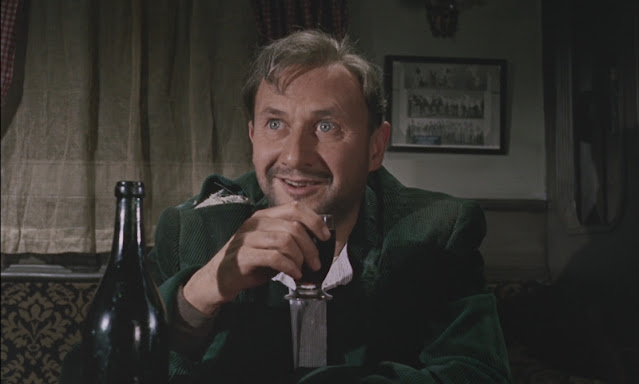
Pleasence, sporting an attempted French accent (and hair!),
makes an impression as the depressive alcoholic Vanet. The only thing of value
he has left is his beloved daughter, Nicole (“The war has left nothing but ruin
and poverty”). He unwisely promises Rossiter/Schüler “anything and everything”
if he will repair his daughter’s face. Although the operation is a success, it proves
to be a Faustian bargain. In an alcohol-fueled moment of poor judgment, he antagonizes
Bosco the dancing bear, getting too close to the enraged animal (okay, a guy in
a not-very-convincing bear suit). The ensuing attack sequence looks more like a
bear rug was draped over him, but it’s a testament to Pleasence’s skill and
professionalism that he convincingly sells his violent death. The one person
who doesn’t suspect any wrongdoing is the adult Nicole (Yvonne Monlaur), who only
thinks of Schüler as her uncle.

Diffring paints a portrait of the perfect egomaniac, shamelessly
manipulative, amoral and vain. He wields a riding crop that he inflicts on
animals and humans alike, to submit them to his will. Much like Dr.
Frankenstein,* he believes the means justify the ends. The performers he helps
are nothing more than raw material for practicing his craft. Of all the people
he manipulates, none are as pitiable as Angela, his assisting surgeon, who
carries an unrequited torch for him. Schüler uses her love for him as leverage,
stringing her along with declarations such as, “You are very necessary to me” (Not
exactly a declaration of affection). To him, she’s little more than another
surgical instrument that can help him attain his goal. He hopes to re-emerge
from hiding to boast about his revolutionary medical discoveries (“I have
unlocked the secrets of plastic surgery that will stagger the world.”). In the
meantime, however, he has a circus to run, and doesn’t appreciate dissent or
attrition among the ranks. He sits back and lets someone else do the dirty work
(usually Angela’s brother Martin). Schüler is a character you love to hate – never
for a moment do you want to see him get away with murder. Despite his abhorrent
nature, one thing that keeps him from being a two-dimensional villain is that
he genuinely cares for Nicole, while attempting to shelter her from his evil
actions.
* Fun Fact #4: Diffring starred as Baron Frankenstein in the
failed 1958 Hammer TV pilot Tales of Frankenstein.
Circus of Horrors keeps its audience on edge
throughout with a series of bloody events orchestrated by the sociopathic main
character.* Considering that World War II and its associated horrors had only
ended 15 years before the movie debuted, the atrocities of Nazi* surgeons such
as Mengele would have been embedded in the public’s consciousness. Everything
about the film is slightly off-kilter, adding to the viewer’s unease. The
inclusion of the song, “Look for a Star”** is more disconcerting than soothing
(Like it? Great. Don’t like it? Too bad. It’s featured in the movie five times).
Similarly, the troupe of clowns*** emerge as a mute Greek chorus, underscoring
Sculer’s misdeeds.
* Not-So-Fun Fact: Although frequently typecast as a Nazi
(and Nazi-like characters) in numerous productions, Anton Diffring’s film roles
couldn’t be further from the truth. Diffring had fled Nazi Germany to avoid
persecution because he was gay and his father was Jewish.
** Fun Fact #5: The hit song was written by Mark Anthony, a
pseudonym for Tony Hatch, probably best known today for penning the Petula
Clark song, “Downtown.”
*** Fun Fact #6: Watch for Kenny (“R2D2”) Baker in an
uncredited appearance, as one of the clowns.
One of the plot conveniences is that characters who are
otherwise so street smart foolishly telegraph their intentions to leave (Why
don’t they just sneak out in the middle of the night?) or blackmail the doctor.
After his top star Magda (Vanda Hudson) dies in a knife act gone awry, with a
little help from Schüler’s toady, Martin, high wire performer Elissa (Erika
Remberg) insists that she have top billing in the show (Three guesses about how
well that goes, and the first two don’t count). Also, considering the
reputation of the “Jinx Circus,” it stretches believability why anyone would
want to join in the first place (free plastic surgery or not). While perhaps a
notch below in quality compared to some of its more notable contemporaries (Psycho,
Peeping Tom, and Eyes Without a Face), Circus of Horrors is unabashedly ghoulish fun.
Sources for this article: “Back to the Circus: An Interview
with Kim Newman” (2020), “Interview with Broadcaster Stuart Maconie” (2020).



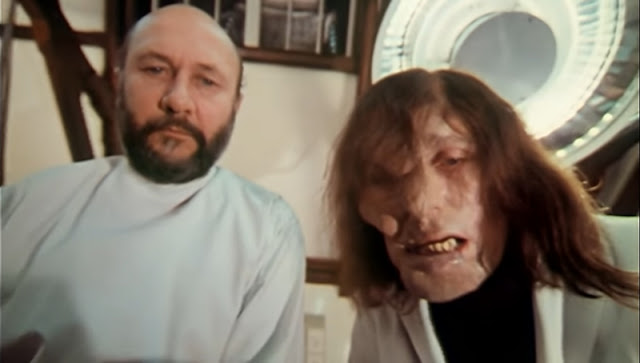
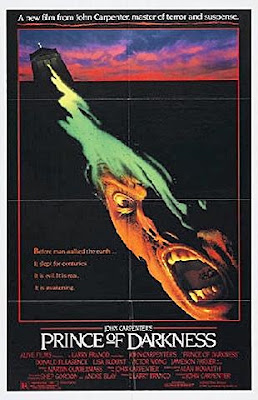





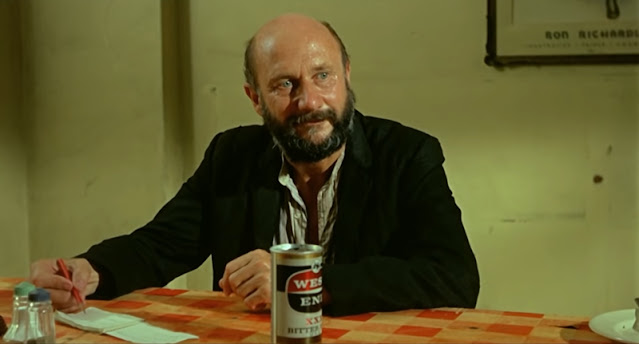












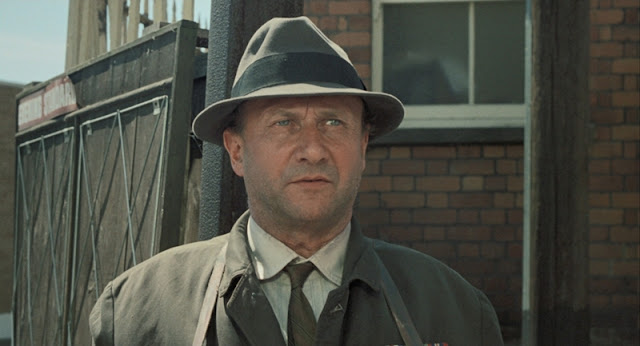

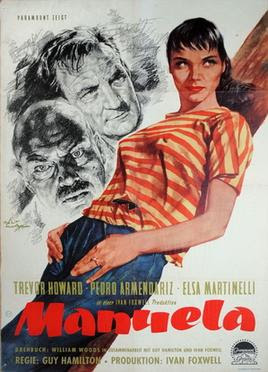
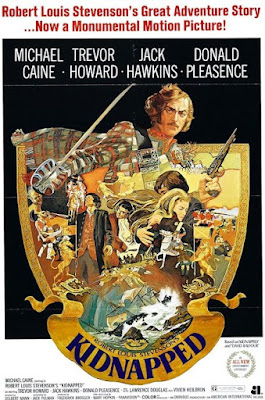

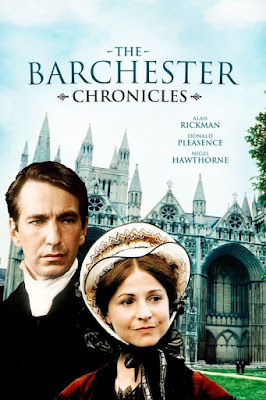


.JPG)
